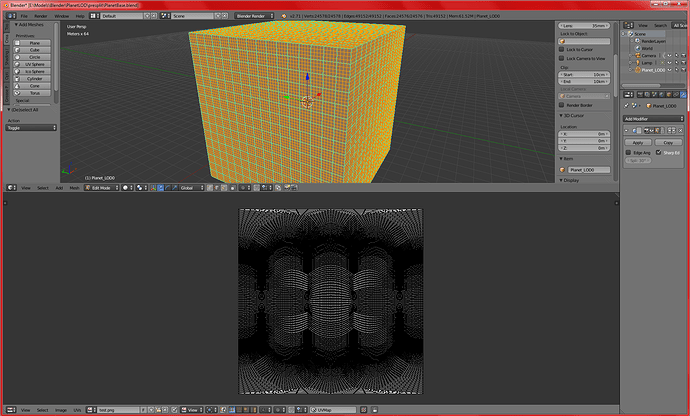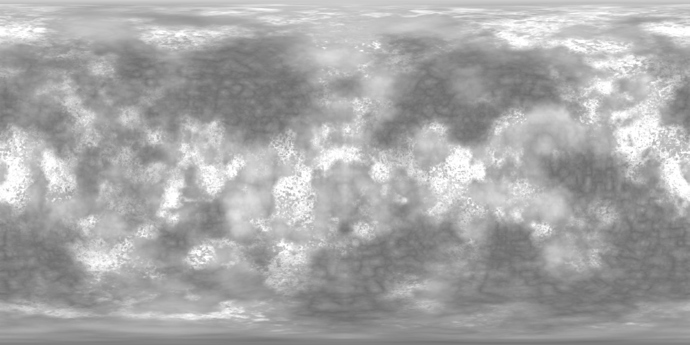Ok I’ll try to break it down.
I start with a cube. I subdivide this cube into the desired detail. I change my viewport to hone in on one side using numpad1. I then UV mapped the cube using sphere projection. This worked out decently, but unfortunately is not correct. Here is what that looks like:
Next, I run a couple of python scripts I wrote. One of them chops this cube up into distinct objects, each one essentially a plane. The second script multiplies the normal of every vertex by a predefined radius value. This turns the cube into its sphere form.
Inside my game, I have a noise routine that returns values pre-mapped to a simple cylindrical (which after reading what you wrote, I may have misinterpreted as gall-peters). I feed it lat/long values, and the noise routine returns the correct data. I use the UV map to determine what the lat/long values should be. Here is a heightmap generated using the same noise:
NOTE: I am aware this is rectangular. It is the desired mapping I want to use. In reality, I currently use a square map, and an image is never created. I just want to demonstrate how the noise projection looks.
The problem is that the UV map above is incorrect. It works, but there is noticeable distortion in places like the poles, and areas of the final sphere that used to be the corners of the cube. There is also the fact that it is a square and not a rectangle, but that shouldn’t be relevant since I want to make a new UV map anyways.
Now, after reading what you wrote, I definitely confused this topic by saying I need gall-peters projection. Sorry about that! It is far more correct for me to say I need simple cylindrical. The example image you provided definitely looks like it would be correct.
So basically, how would I get blender to create a simple cylindrical UV map from a cube as shown above? I tried to simply use cylindircal mapping in blender, but the verts at the top and bottom of the map are all out of wack (connected together in unexplainable ways, and crammed on top of eachother; as well as extending beyond the right side boundary of the image.





